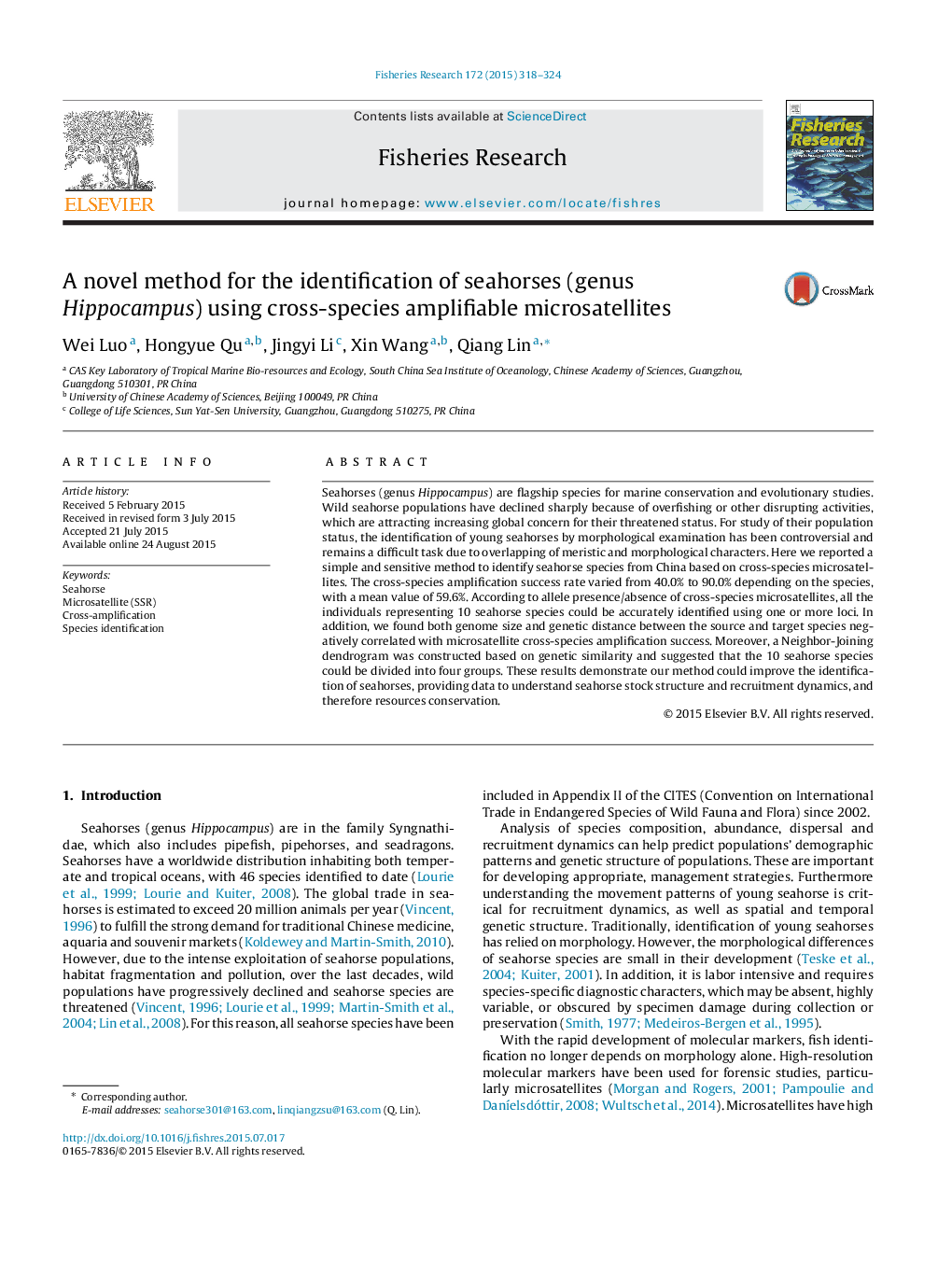| Article ID | Journal | Published Year | Pages | File Type |
|---|---|---|---|---|
| 6385455 | Fisheries Research | 2015 | 7 Pages |
â¢This MS reported a simple and sensitive method to identify seahorse species.â¢Genome size and genetic distance correlate with cross-amplification negatively.â¢The dendrogram provides insights into genetic relationships of seahorse family.
Seahorses (genus Hippocampus) are flagship species for marine conservation and evolutionary studies. Wild seahorse populations have declined sharply because of overfishing or other disrupting activities, which are attracting increasing global concern for their threatened status. For study of their population status, the identification of young seahorses by morphological examination has been controversial and remains a difficult task due to overlapping of meristic and morphological characters. Here we reported a simple and sensitive method to identify seahorse species from China based on cross-species microsatellites. The cross-species amplification success rate varied from 40.0% to 90.0% depending on the species, with a mean value of 59.6%. According to allele presence/absence of cross-species microsatellites, all the individuals representing 10 seahorse species could be accurately identified using one or more loci. In addition, we found both genome size and genetic distance between the source and target species negatively correlated with microsatellite cross-species amplification success. Moreover, a Neighbor-Joining dendrogram was constructed based on genetic similarity and suggested that the 10 seahorse species could be divided into four groups. These results demonstrate our method could improve the identification of seahorses, providing data to understand seahorse stock structure and recruitment dynamics, and therefore resources conservation.
